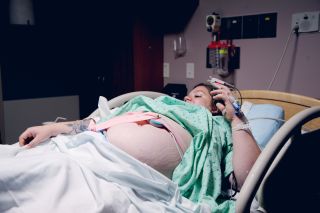Parenting
How to Give Birth Is an Important Parenting Decision
Personal Perspective: Why I chose to have five home births.
Posted May 29, 2024 Reviewed by Hara Estroff Marano
Key points
- How we bring our children into the world matters for ourselves and our children.
- Education is useful for making decisions about birth.
- Parents should be invested in the process of birth, as it has a lasting impact on parenting.
As I prepare this article, I am seven months pregnant with my sixth child. Talking about birth fills my heart with deep concern and amazing hope, as I can see how the tide is changing to honor women better.
Parents should see birth as a parenting decision that they are reluctant to relinquish. The research shows that how we birth is not without consequence, it can directly impact the postpartum period in both positive and negative ways (Ayers & Sawyer 2014; Borders 2006). I have been blessed to experience positive births and euphoric postpartum periods, and I know being knowledgeable about my body, the birth process, and seeking out alternatives has been instrumental in this journey. I feel closer to my children and get to share with them the joy and peace that accompanied their entry into the world instead of telling them how terrible it was and how much pain they caused me. How we bring our children into the world matters, which is why I want to share my journey.
How it all began
My journey to home birth began thirteen years ago, when I was pregnant with our first child. As I began going to doctor’s visit, I quickly found the impersonal environment confusing. No one ever asked about my diet, sleep patterns, or stress management. These were all things I knew were important for our health. Why wasn’t this a concern? I realized after a few visits that the focus was risk and symptom management not prevention and making sure I was empowered to support the health of my own pregnancy. I was finishing my doctorate during that time, so I decided to learn as much I could.

Understanding that this life would have to make its way out of my body, I began looking at birth videos and watching every birth show available. This was a terrible idea. I saw nothing but emergencies, screaming, and stress. My mind viscerally rejected this as a possibility for me. I could not imagine lying in a hospital bed with machines beeping around me, hungry and thirsty, waiting for a doctor to tell me what to do.
To be clear, I had no idea what I would do for some months, but I was sure this would not be it. I investigated birth centers and found that my insurance wouldn’t cover the cost and they were overbooked. The choices felt so limiting. I started asking my doctors about ways to make the experience more pleasant; they offered only drugs and shared the hospital requirements that could not be altered for me.
Discouraged
I was discouraged, but I didn’t give up, I talked to everybody I met, including strangers hoping they knew something I didn’t. When I was six months pregnant, we booked a photoshoot, and the photographer would be my next victim. I told him my concerns, and he promptly asked, “Why don’t you just do it at home?” I thought he was insane, I answered, “Because it is 2011 and we have modern medicine now.” The blinders I wore were thick. I complained about how much I disliked the system but felt some odd allegiance to it. He gave us a number and urged me to at least talk to the midwife his wife works with and see what I think.
Calling the midwife
With nothing to lose, I called her. My husband and I met with her that week. We approached her with skepticism and a bit of fear. How could she possibly ensure my or my baby’s safety at home? My husband, usually a very humble and quiet man, drilled her with question after question about my safety. What if the baby needs oxygen? What if my wife tears?
The midwife, who was completely at peace with her skill set and experience, answered each of his questions professionally. As I listened, I became more interested. She told us not to decide yet and offered us some resources about home birth. I dug in immediately.
After a few weeks of studying, talking, and praying, we chose to give birth at home with this amazing midwife. My husband was convinced it could be a good experience, but thoughts of what if something goes wrong continued to concern him My mind, however, was made up.
Birth

We bought our birth kit and I finally felt excited about my birth. The rest of my pregnancy continued joyfully. The day I was to give birth, my water broke in the morning, and I was so excited I smiled constantly. I made some food in between contractions, which didn’t start immediately. I was a little surprised at how manageable they were, but I prepared my mind for the worst pain I ever felt, based on what others had told me.
That pain never arrived but our baby girl did—after 18 hours of labor and pushing for four minutes. We did it!! I was shocked it was over. The rest is history as we birthed at home four more times. I was always well nourished, rested, and supported, and the postpartum care was unmatched. The midwives came back to visit and sit with me for weeks after birth.
Not that every woman wants to or should have a home birth. Parents should educate themselves about what is best for them instead of feeling forced to do whatever they are told.
For women: the decision about how to birth has a lasting impact on how we view ourselves and our bodies. It cannot be taken lightly. Don’t let someone decide your and your baby’s journey for you. Be at least a part of the decision, and walk in it with confidence.
References
Ayers, S., Sawyer, A. (2019). The Impact of Birth on Women’s Health and Wellbeing. In: Taubman – Ben-Ari, O. (eds) Pathways and Barriers to Parenthood. Springer, Cham. https://doi.org/10.1007/978-3-030-24864-2_12
Borders, N. (2006). After the Afterbirth: A Critical Review of Postpartum Health Relative to Method of Delivery. Journal of Midwifery & Women's Health Volume 51, Issue 4, July–August 2006, Pages 242-248




